|
|
|
Sort Order |
|
|
|
Items / Page
|
|
|
|
|
|
|
| Srl | Item |
| 1 |
ID:
098275
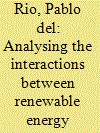

|
|
|
|
|
| Publication |
2010.
|
| Summary/Abstract |
CO2 emissions reduction, renewable energy deployment and energy efficiency are three main energy/environmental goals, particularly in Europe. Their relevance has led to the implementation of support schemes in these realms. Their coexistence may lead to overlaps, synergies and conflicts between them. The aim of this paper is to analyse the interactions between energy efficiency measures and renewable energy promotion, whereas previous analyses have focused on the interactions between emissions trading schemes (ETS) and energy efficiency measures and ETS and renewable energy promotion schemes. Furthermore, the analysis in this paper transcends the "certificate" debate (i.e., tradable green and white certificates) and considers other instruments, particularly feed-in tariffs for renewable electricity. The goal is to identify positive and negative interactions between energy efficiency and renewable electricity promotion and to assess whether the choice of specific instruments and design elements within those instruments affects the results of the interactions.
|
|
|
|
|
|
|
|
|
|
|
|
|
|
|
|
| 2 |
ID:
098582
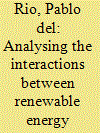

|
|
|
|
|
| Publication |
2010.
|
| Summary/Abstract |
CO2 emissions reduction, renewable energy deployment and energy efficiency are three main energy/environmental goals, particularly in Europe. Their relevance has led to the implementation of support schemes in these realms. Their coexistence may lead to overlaps, synergies and conflicts between them. The aim of this paper is to analyse the interactions between energy efficiency measures and renewable energy promotion, whereas previous analyses have focused on the interactions between emissions trading schemes (ETS) and energy efficiency measures and ETS and renewable energy promotion schemes. Furthermore, the analysis in this paper transcends the "certificate" debate (i.e., tradable green and white certificates) and considers other instruments, particularly feed-in tariffs for renewable electricity. The goal is to identify positive and negative interactions between energy efficiency and renewable electricity promotion and to assess whether the choice of specific instruments and design elements within those instruments affects the results of the interactions.
|
|
|
|
|
|
|
|
|
|
|
|
|
|
|
|
| 3 |
ID:
132678
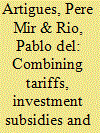

|
|
|
|
|
| Publication |
2014.
|
| Summary/Abstract |
Policy combinations and interactions have received a considerable attention in the climate and energy policy realm. However, virtually no attention has been paid to the analysis of the combination of different deployment instruments for the same renewable energy technology. This neglect is all the more striking given the existence in current policy practice of combinations of deployment instruments either across technologies or for the same technology, both in the EU and elsewhere. What renewable electricity support policies to use and, therefore, how to combine them in order to promote the deployment of renewable energy technologies cost-effectively is a main concern of governments. The aim of this paper is to provide insight on the cost-effectiveness of combinations of deployment instruments for the same technology. A financial model is developed for this purpose, whereby feed-in tariffs (FITs) are combined with investment subsidies and soft loans. The results show that the policy costs of combinations are the same as for the FITs-only option. Therefore, combining deployment instruments is not a cost-containment strategy. However, combinations may lead to different inter-temporal distributions of the same amount of policy costs and, thus, differently affect the social acceptability and political feasibility of renewable energy support.
|
|
|
|
|
|
|
|
|
|
|
|
|
|
|
|
| 4 |
ID:
116713
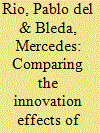

|
|
|
|
|
| Publication |
2012.
|
| Summary/Abstract |
The aim of this paper is to provide a comparative assessment of the innovation effects of instruments which support the diffusion of renewable electricity technologies with a functions-oriented technological innovation system perspective. The paper provides a link between two major streams of the literature: the functions of innovation systems and the literature on renewable electricity support schemes. We show that, when a functional perspective is adopted, feed-in tariffs are likely to be superior to other policy instruments (quotas with tradable green certificates and tendering), although they still need to be complemented with other instruments, most importantly, direct R&D support. Furthermore, those innovation effects are affected by the specific design elements of the instruments chosen.
|
|
|
|
|
|
|
|
|
|
|
|
|
|
|
|
| 5 |
ID:
111322
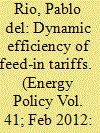

|
|
|
|
|
| Publication |
2012.
|
| Summary/Abstract |
Dynamic efficiency has received much less attention than the effectiveness and static efficiency criteria to assess policies to support electricity from renewable energy sources (RES-E). On the other hand, the literature on RES-E support shows that the choice of design elements within RES-E support instruments is at least as important to successfully promote RES-E as the choice of specific instruments. The aim of this paper is to build a theoretical framework for dynamic efficiency analysis and assess the dynamic efficiency properties of the different design elements of feed-in tariffs. It is shown that, in fact, several design elements can have a significant impact on the different dimensions of dynamic efficiency. Particularly relevant design elements in this context are technology-specific fixed-tariffs, floor prices, degression, reductions of support over time for existing plants, long duration of support and support falling on consumers. In addition, it is shown than some design elements would be more appropriate than others to activate specific dimensions.
|
|
|
|
|
|
|
|
|
|
|
|
|
|
|
|
| 6 |
ID:
103325
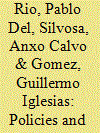

|
|
|
|
|
| Publication |
2011.
|
| Summary/Abstract |
Repowering of a wind farm is the process of replacing existing wind turbines with new turbines that either have a larger nameplate capacity or more efficiency, resulting in a net increase of the power generated. Although repowering brings, both, social and private benefits, there are also several obstacles to repowering which justify public support. The aim of this paper is to provide an overview and a qualitative analysis of instruments and design options to support repowering of on-shore wind farms. The multicriteria analysis carried out in this paper shows that all instruments have their advantages and drawbacks. However, feed-in tariffs and investment subsidies seem to be particularly appropriate instruments in this regard. Furthermore, we provide an assessment of different design options to promote repowering according to key assessment criteria. The relevance of design elements hinges on the fact that these are the ones directly affecting the variables that are relevant in the decision to repower (capacity factors and investment costs).
|
|
|
|
|
|
|
|
|
|
|
|
|
|
|
|
| 7 |
ID:
107487


|
|
|
|
|
| Publication |
2011.
|
| Summary/Abstract |
The aim of this paper is to analyse the administrative procedures for the granting of authorisations for the siting of wind farms in Spain, currently the competency of regional authorities. The analysis reveals some commonalities and differences between the procedures across regions. Furthermore, some aspects regarding these procedures have raised the concern of different stakeholders, including the central government and wind energy investors. A conflict between the interests of the central and regional governments can be observed. Lack of coordination between the different administrative levels and the "more is better mentality" of regional authorities have led to a significant growth of wind energy requests for the (national) feed-in tariff. In turn, investors have complained about the discretionarity and non-transparency of those procedures and the lack of homogeneity across regions. This is likely to result in delays, uncertainty for investors and higher transaction costs. Although there has been a trend to a model which involves the use of multicriteria bidding procedures with more explicit, objective and precise criteria regarding project selection, the aforementioned problems suggest the need to improve coordination between the different administrative levels.
|
|
|
|
|
|
|
|
|
|
|
|
|
|
|
|
| 8 |
ID:
126843
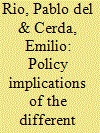

|
|
|
|
|
| Publication |
2014.
|
| Summary/Abstract |
The cost-effectiveness of support for renewable electricity is a main criterion to assess the success of policy instruments, together with effectiveness. The costs of support are also a source of significant concern for governments all over the world. However, significant confusion exists in the literature on the cost-effectiveness of public support for renewable electricity. While some authors define the concept of cost-effectiveness as that which complies with the equimarginality principle, many others, including documents from relevant organisations (European Commission, International Energy Agency, Intergovernmental Panel on Climate Change) define it as "the lowest costs of support", generally equating it with the minimisation of consumer costs. The aim of this paper is to clarify the differences between both approaches and their policy implications regarding the choice of instruments and design elements. It is shown that they partly overlap and that their policy implications clearly differ, leading to very different policy prescriptions. While the former favours technology neutral instruments and design elements, the "minimisation of consumer costs" approach favours instruments and design elements which adjust support levels to the costs of the technologies.
|
|
|
|
|
|
|
|
|
|
|
|
|
|
|
|
| 9 |
ID:
097196
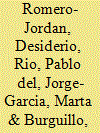

|
|
|
|
|
| Publication |
2010.
|
| Summary/Abstract |
The significant increase in passenger transport activity (cars) experienced by Spain and its associated increase in energy consumption have several associated negative aspects, including a greater dependence on foreign energy sources and higher GHG emissions. Therefore, reducing the level of transport activity would bring important socioeconomic and environmental benefits. The aim of this paper, which focuses on energy consumption in the passenger transport, is fourfold: (1) to provide a diagnostic of energy consumption in the Spanish passenger transport system and the related problems; (2) to develop a model to calculate price and income elasticities of demand for transport fuel; (3) to apply this model to the Spanish passenger transport sector; (4) to infer policy recommendations derived from the results of the diagnostic and the model. It is claimed that, in view of those low price elasticities and high income elasticities and if a reduction in the scale of transport activity is deemed socially desirable, a combination of instruments is necessary. Fuel taxes play an important role within this combination. Apart from their long-term effects, the low price elasticity of demand for transport fuel would allow the collection of a significant amount of revenues, which could eventually be earmarked to encourage reductions in private transport demand and modal shifts with other instruments.
|
|
|
|
|
|
|
|
|
|
|
|
|
|
|
|
|
|
|
|
|